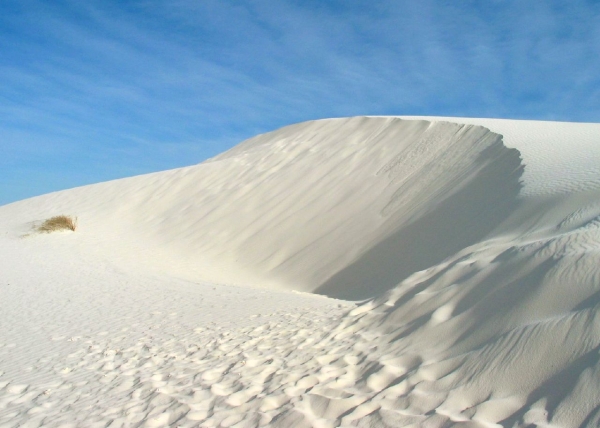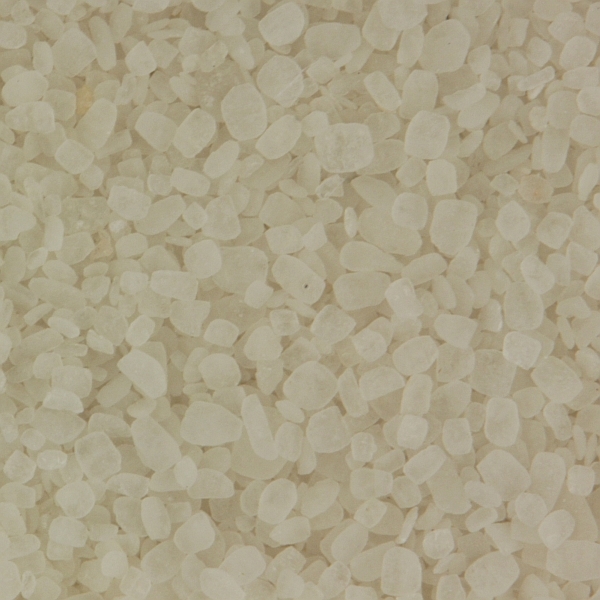Gypsum is a relatively rare constituent of sand. An exception is a large dune field in New Mexico White Sands National Monument that is entirely composed of tabular gypsum grains.
Why is gypsum rare in sand? Because it is moderately soluble in water. Gypsum crystallizes out of concentrated solutions — it is an evaporite mineral. It can also quite easily go into solution again. Anything soluble is generally not going to last long in sand. Gypsum sands in New Mexico exist there because this state is not too famous for a wet climate, quite the contrary. The area also has no outlet to the sea which means that gypsum grains that are dissolved in rain water have no escape from the area and eventually may become sand grains again.
Ordinary sand grains made of quartz are the disintegration product of granite, sandstone, or other quartz-containing rocks. The crystals of quartz can be very old. Gypsum grains in the White Sands National Monument are different. They are not the product of disintegration of rocks. These grains are formed in the salty brines which get their high dissolved gypsum from the gypsum containing sedimentary rocks nearby.

White gypsum dunes of the White Sands National Monument in New Mexico, USA. Photo: davebluedevil/Wikimedia Commons.

Sand from the White Sands National Monument in New Mexico that is composed entirely of gypsum grains. Width of view 5 mm.
To who me it may concern, I would like to know if I could get asamle amount of this sand in order to do a school project?
You should contact White Sands National Monument. Maybe they can help. I have a very small amount of this sand.